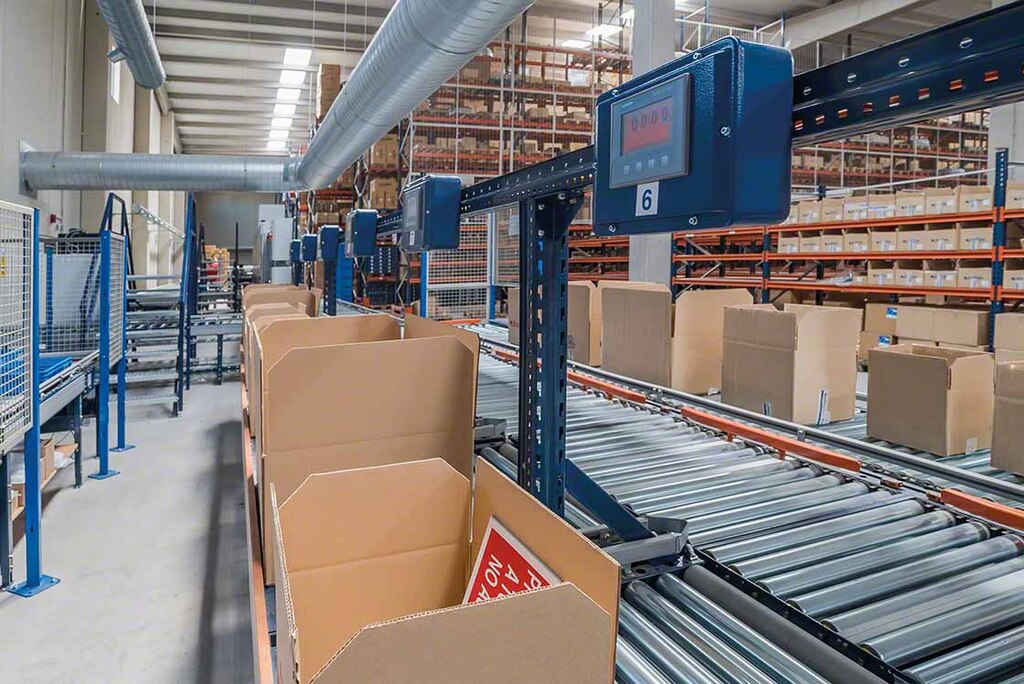
How to optimize picking processes in e-commerce: key strategies
In terms of logistical efficiency, the goal of all e-commerce is to drive down times from the moment the online store receives an order until the package leaves the warehouse. To achieve this, the alignment and coordination of all e-commerce picking processes is essential.
In our article, we review the main strategies aimed at optimizing picking operations in warehouses of online stores.
Strategies to improve e-commerce picking processes
1. Coordinate logistics processes from a centralized system
From the warehouse's point of view, the order cycle starts when a picking order arrives. However, the full cycle includes steps before that, such as payment verification and info gathering. It also includes subsequent steps, such as the delivery of the order to the transport agency.
It is essential that picking operations are coordinated with the other players in the supply chain. This is achieved thanks to the merging of different software programs that work together. The most common are: ERPs, Warehouse Management Systems (WMSs), transport fleet management software or third-party systems (such as transport agencies).
2. Maximize standardization of packaging and labeling tasks
Like the previous section, process standardization is a strategy that provides major advantages for optimizing picking tasks in e-commerce. Most standardization efforts focus on two main areas:
- Identification and tracking systems: When using one type of labeling and reference coding or another, the most widespread standards should be considered. You should also try to streamline them as much as possible. There is a common need among online store warehouses to streamline processes with transportation agencies, which the Multi Carrier Shipping Software module facilitates significantly.
- Packaging material: to avoid accumulating an excess of empty packaging stock, study and group SKUs by size and characteristics to define an adaptable standard. For example, in many e-commerce facilities, height-adjustable boxes or two or three models of boxes are used. The boxes are then adjusted with filler (this is done in Cofan's warehouse in Spain, for example).

3. Run intelligent location management in your warehouse
In e-commerce picking tasks, one goal in improving efficiency is to reduce the travel time. Location management is especially important in these types of warehouses, as direct access to products speeds up the first stages of picking.
In this sense, management of chaotic locations means not only optimizing picking and order assembly, but also making full use of storage space. To do so, however, two fundamental requirements must be met:
- Prioritize rack flexibility: for example, many logistics operators’ warehouses that service different e-commerce businesses opt for pallet racking or picking racks, as they offer more adaptability to demands as they occur.
- Have a warehouse management system (WMS) that can organize the position of each product according to the logistic parameters defined by the company.
4. Satisfy the demand easily and select the most suitable picking method
E-commerce picking operations are often planned with very little leeway. To face this challenge, the potential of WMSs as multi-level picking software must be exploited:
- A WMS has an enormous data processing capacity, which allows the automatic prioritization of orders to be prepared based on variables such as the urgency of the shipment or transport routes.
- This software integrates not only with automated systems but also with picking assistance devices. Examples of these are voice picking or pick-to-light systems, which speed up the process and reduce the number of picking errors.
- E-commerce stores usually have a large number of workers dedicated to manual picking. So, it's crucial that staff are organized effectively. WMS systems do their part here, as they make it possible to distribute tasks evenly among workers, thereby increasing overall staff productivity.
These strategies, among others, are part of the secret recipe for success in organizing e-commerce picking processes. It is worth mentioning that another big advantage of using a WMS in a warehouse is that you can easily test changes in procedures or new picking strategies backed by data. If you want to know more about the Interlake Mecalux Easy WMS, don't hesitate to get in touch — we'll show you a detailed demo so you can see it all in action.
